It is important to remember that natural drugs for varicose veins are also able to alleviate the symptoms of the disease, preventing its deterioration.
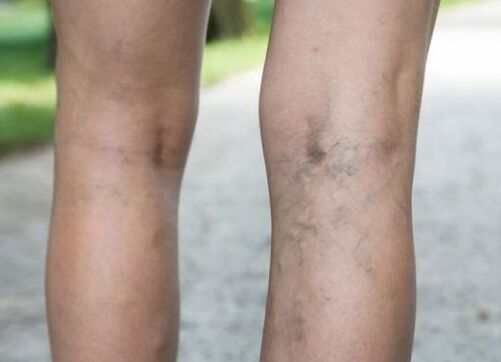
Varicosis is a very common disease, especially among women. About 25% of adults suffer from varicose veins. In most cases, varicose veins appear in the lower part of the legs. Consider the main reasons for his education.
Varicose veins and the reasons for its formation
The veins have one -sided valves that do not allow blood to drain back. When the valves become unusable, instead of continuing confident movement to the heart, the blood begins to gather in the veins. This leads to their increase and the development of the inflammatory process.
Most often, varicose veins on the legs affects. Their location is to blame - they are more distant from the heart. In addition, the movement of blood up is complicated by earthly gravity.
Possible factors in which varicose veins develop:
- pregnancy;
- menopause;
- age after 50;
- a long stay in a standing or sitting position (when you are in one position for a long time, your veins have to work more zealous to deliver blood to the heart);
- genetic predisposition to varicose veins (almost 50% of cases);
- belonging to the female sex;
- hormone replacement or contraceptive therapy;
- Other reasons.
Symptoms of varicose veins
Varicosis is distinguished by the following primary symptoms - clearly noticeable, ugly veins, especially on the legs. In addition, the severity and pain over or around enlarged veins can be observed. Sometimes swelling appears and a change in the color of the skin around the veins. Varicose veins leads to bleeding and formation of ulcers only in severe cases.
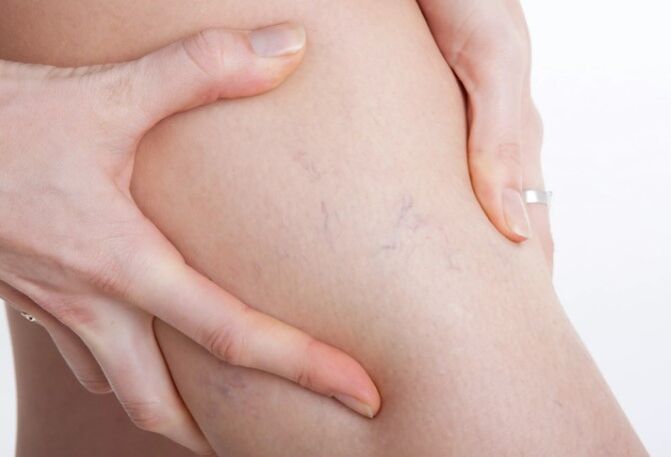
Varicose veins and its diagnosis
During the diagnosis of varicose veins, the doctor examines the legs and noticeable veins, asks about possible pain and noticed symptoms. In addition, the doctor may prescribe an ultrasound for checking blood flow. This test is non -invasive, since high -frequency sound waves are used during the procedure. With their help, you can find out how the blood is moving through the veins.
Depending on the location of varicose veins, a phlebogram may be required to assess the state of veins. During this medical test in the lower limbs, the doctor introduces a special contrast agent, and takes an X -ray picture of the area painted by him.
The contrast medium is manifested in the picture, and helps to obtain more extensive information about the blood flow in the limbs of the patient. Studies such as ultrasound and phlebogram help to make sure that pain and swelling in the legs caused precisely varicose veins, and not another violation, for example, a thrombus.
Changing lifestyle as the main way to prevent varicose veins
If you notice the very first symptoms of varicose veins, then after a medical examination, follow our tips on changing the usual lifestyle. Some tips will suit everyone who does not want to feel the unpleasant symptoms of varicose veins.
How to start living correctly with detected varicose veins:
- If you often have to stand or sit (especially with your legs crossed), take sufficient breaks for relaxing, alternating with a small leg exercise.
- Women should begin to wear special compression stockings, men - compressional socks.
- Regular sports can improve the muscle tone of your legs and blood circulation.
- Completely dress, do not wear too narrow pants. After all, narrow things can only worsen blood flow.
- Do not wear high heels for too long. The lower heel increases the tone of the calf muscles, which improves blood circulation in the legs.
If during the initial examination the doctor and the results of the corresponding laboratory tests, varicose veins was confirmed, do not despair. And pull yourself together and act in order to stop the development of the disease and not aggravate your condition! Let us dwell on some of the methods of preventing varicose veins in more detail.
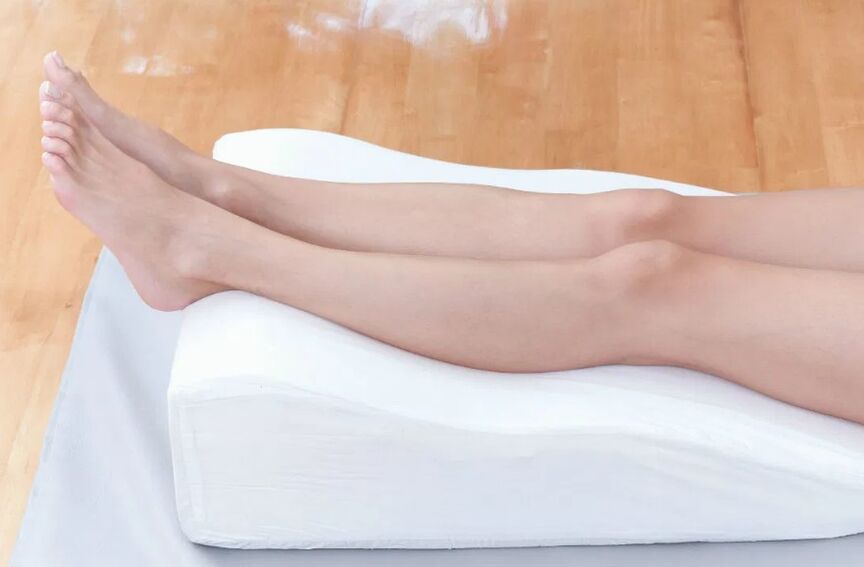
Prevention of varicose veins No. 1: Avoid prolonged sitting or standing
Long stay in a sedentary or standing position complicates the movement of blood in the foot veins against gravity, which accordingly increases pressure in the veins. Ultimately, this leads to the fact that blood spreads around the ankles, and the feet and caviar refire and hurt. The movement will reduce the pressure in the veins, and also improve blood circulation.
But if you are stuck behind your workplace, the prevention of varicose veins can be the regular performance of the following simple exercises:
- Twist your imaginary pedals;
- pull the ankles forward;
- Bend your knees as if marching.
Try to raise your legs up for 15 minutes at least three times a day. The lift of the legs above the heart level weakens the strength of severity. This leads to an improvement in blood circulation and less swelling of the ankles.
Prevention of varicose veins No. 2: Use compression stockings and socks
Compression stockings and socks help keep the veins in the right position. This allows the veins to function properly, and also reduces blood accumulation, swelling and pain. But such a prevention of varicose veins has its own nuances.
At night, you can feel small convulsions after wearing supporting compression products during the day. There are different levels of compression depending on how damaged your veins are. When choosing one of the four degrees of compression - weak, moderate, strong and superpower - it is better to consult your doctor.
Prevention of varicose veins No. 3: lead a healthy way of life
Varicose veins can develop based on those risk factors that you cannot influence. Therefore, in order to prevent further damage to veins, it is so important to adhere to a healthy way of life. Obesity, in which the pressure inside the veins is higher - this is one of the aggravating factors.
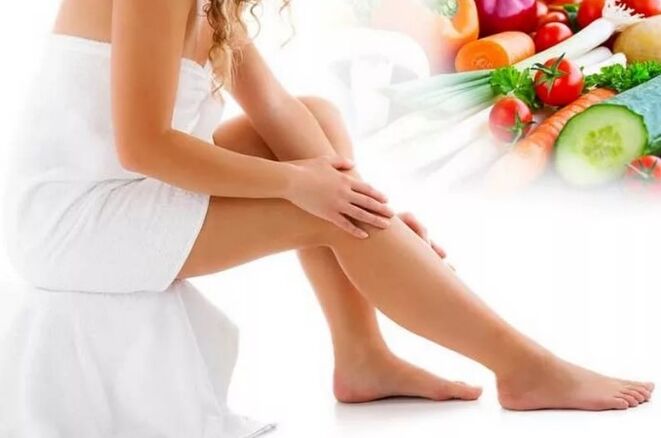
The prevention of varicose veins also involves the healing of the diet, which should be complex carbohydrates, proteins, healthy fats. Avoid a high salt content. Eat products with a high fiber and potassium content. Drink enough water during the day - this contributes to a healthy blood circulation in the limbs.
Prevention of varicose veins No. 4: Sport as part of your daily life
The best prevention of varicose veins is walking. A good option will also be yoga. You can perform many poses in which your legs will be above the level of the heart. These are inverted poses, among which a rack on the head, a stand on the shoulders, and the pose of a bent candle (legs on the wall) are highlighted.
The prevention of varicose veins by means of yoga will help stretch and bring into the tone the deepest muscles of your IKR and the back of the thigh. To some extent, deep muscles can help the valves of the veins function properly. Among other useful types of active activity are cycling and swimming.
Prevention of varicose veins No. 5: Sleep poses for pregnant women
Pregnancy is one of the main reasons why varicose veins develop. You can prevent education and alleviate the symptoms of existing varicose veins if you sleep on your left side. Such a pose in a dream helps to reduce the pressure that an enlarged uterus exerts on a large vein of the inguinal region. And she is just in the right side.
Home natural products for varicose veins
Most people who already have varicose veins (have not become acute chronic) do not need any special treatment. Changing lifestyle and home medicines for varicose veins will help improve the condition. Here are some of them.
Remedy for varicose veins No. 1: horse chestnut extract
This natural remedy for varicose veins reduces swelling, itching, heaviness and pain in the legs. It is believed that this effect provides a biologically active connection of nuclear power plants. It is effective both when taking orally and external use.
Nevertheless, remember that raw horse chestnut seeds are very toxic, and it is forbidden to use them inside. Only with proper preparation, the toxic element is eliminated, and they become safe. Consult your doctor how to properly use or use the product.
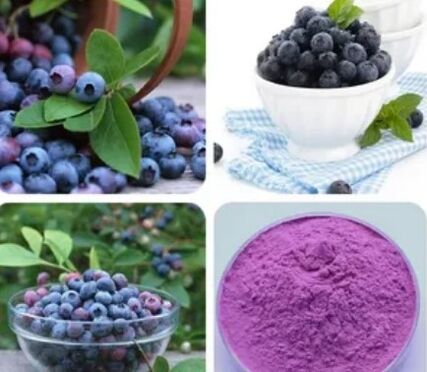
Remedy for varicose veins No. 2: Fruit blueberry extract
It was established that the fruit in blueberries strengthens the capillaries and increases the elasticity of erythrocyte membranes. This remedy for varicose veins can reduce swelling, numbness and reduction of ankles and foot IKR.
Blueberry fruit extract can be purchased at a pharmacy. Blueberries in its natural form of berries will also not hurt. Moreover, in the midst of the summer season of blueberries.
Remedy for varicose veins No. 3: Hamamelis Virginsky
The Hamamelis of Virginsky contains flavonoids and tannins. They retain the structure of veins, and help maintain blood vessels in good condition. The wiping of the affected area with a decoction of Hamamelis Virginsky can be useful. But be careful and do not put pressure directly on the veins.
Remedy for varicose veins No. 4: Gotu Kola
Such a remedy for varicose veins as Gotha Cola can strengthen the veins and improve blood circulation. For varicose veins, both ointments and food additives with its extract are used. One study found that after a two -month treatment of patients with varicose veins with the help of Gotu Cola in most patients, swelling and heaviness in the legs decreased.
Remedy for varicose veins No. 5: Pontic Iglitsa root
The root of the pontic Iglitsa is an excellent remedy for varicose veins. It contains ruscogenin, a steroid component that helps strengthen veins. Studies found that the drug that contains the root of the pontic oglitsa has the ability to reduce pain, cramps and severity in the legs. It must be taken inside. For varicose veins, local creams are also used.
Remedy for varicose veins No. 6: apple cider vinegar
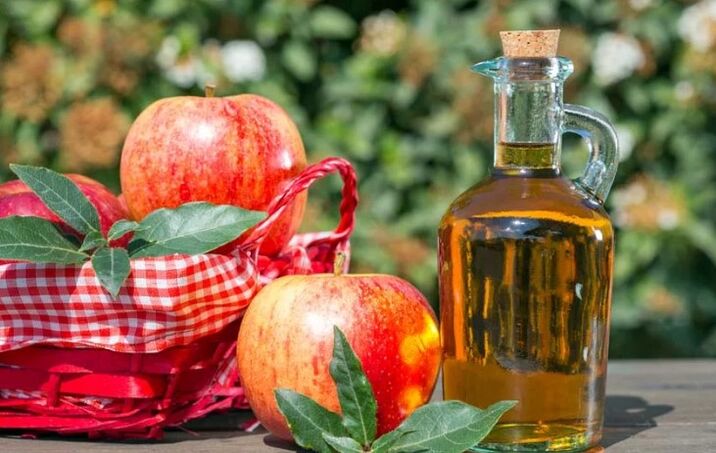
To treat varicose veins with apple cider vinegar is already part of the tradition. During one study, its participants were asked to moisten a piece of fabric in apple cider vinegar, and apply to the affected area for half an hour twice a day. Apple vinegar from varicose veins should be used, while adhering to the usual treatment. With such a combination, a significant relief of symptoms such as cramps, swelling, pain and itching was noted, in comparison with treatment without the use of apple cider vinegar.
How to treat neglected varicose veins
In some cases, varicose veins can lead to ulcers and wounds on the legs, blood clots, as well as chronic inflammation. In a severe case, even a gap of veins can occur. In the presence of these symptoms, consult a doctor immediately. He can advise treating varicose veins using invasive treatment methods, for example, through surgical intervention.
Surgical intervention for varicose veins
It happens that the prevention of varicose veins does not help. Or veins, affected by varicose veins, bring a lot of pain, or detrimental to general health. In such cases, the doctor may recommend treating varicose veins using the invasive method.
Ligating veins and phlebectomy is a surgical intervention that requires the use of anesthesia. During the procedure, the surgeon makes special incisions on the skin, cuts expanded veins and removes them through the dissection made. Despite the presence of updated phlebectomy options, including laser rays, such operations do not practice so often. And all due to the availability of many new, less invasive methods of treating varicose veins.
Treatment of varicose veins using minimally invasive techniques
Today there is a wide selection of methods for treating varicose veins with minimal invasiveness. Here are some of them:
- Sklerizing therapy - the treatment of varicose veins occurs by introducing a liquid or foam chemical for overlapping a larger vein.
- Microosclerotherapy - uses the introduction of a liquid chemical substance to block smaller veins.
- Laser surgery - the energy of the laser is used to block the inflamed vein.
- Intravenous ablation therapy - uses heat and radio frequency waves for blocking Wen.
- Endoscopic surgery for blocking veins - a miniature endoscope with a light bulb is used, which is introduced through a small incision, with subsequent necessary manipulations.
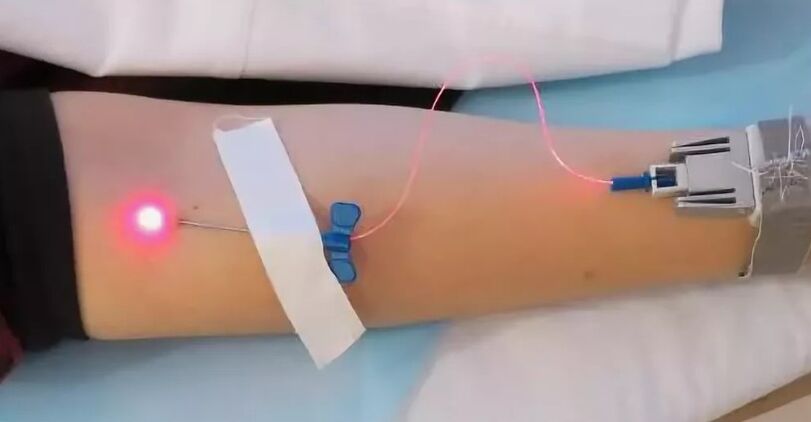
Be sure to discuss with your doctor how to better treat varicose veins, and risks when choosing a particular method. The recommended method may depend on existing symptoms, size and location of varicose veins.
Varicose veins: how to live on
Over time, venous valves become weaker, which further worsens varicose veins. You can not do anything with your age, gender or genetic predisposition. But the prevention of varicose veins in your power!
You can adhere to a healthy diet, regularly play sports, drink enough fluids, maintain blood pressure within normal limits, and use various natural drugs for varicose veins.
Varicose veins are an unpleasant disease that is difficult to treat. But this does not mean that the prevention of varicose veins is not needed - it is able to remove its formation or alleviate existing symptoms. After all, invasive treatment of varicose veins is essentially the last thing. But if you have to do such, it is important to remember that natural drugs for varicose veins are also able to alleviate the symptoms of the disease, preventing its deterioration.























